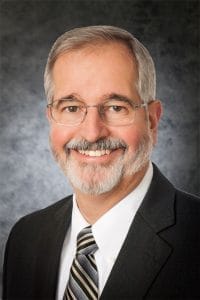If your network is lacking a shared vision, and an understanding of how it can reach that vision, then chances are your network is not going to be making much progress toward becoming high-performing. When everyone within the network is not on the same page, you will have disparate, autonomously functioning (or semi-autonomously functioning) groups, instead of a strong, united whole.
What does this mean for you? After all, your employed network is just one small piece of the total healthcare industry. The market is constantly evolving and new reimbursement strategies mean that your network is going to need to accept risks in order to produce. To be reliably successful, the mentality of your physician groups must be united.
Future success should start with talking to your physicians. They will predictably have a pretty thorough understanding of the practicalities necessary for the network to evolve and mature. They have firsthand understanding of ways in which they could better serve their patients. This is why their leadership is so important when devising methods for meeting industry standards and patient needs, and how identifying variability in care presents a unique opportunity to improve physician practices. This firsthand knowledge just needs to be meshed with organizational direction from executive leadership.
Forging strong group standards to meet network goals will ensure enterprise success within the shifting healthcare marketplace. The best steps for approaching this solution are as follows:
- Get together a group of physician and executive leaders
- Have the group brainstorm how they want the group to look and function in 10 years – a group that they would be proud to be a part
- Create a document outlining the common goals for the group in as much detail as is required to clearly portray that vision to others
Though the potential length of this narrative document may seem overwhelming or overly-bureaucratic, it will often require several pages to outline the future vision in sufficient detail. A detailed narrative is critical for making sure that physicians and staff members are aligned and working toward the same direction for the network. By leaving as little as possible to the imagination, everyone in the network can understand the intent of the document.
Developing this type of document can be a lengthy process. The initial brainstorming session should be supported by interviews with key physicians, executives, and practice managers about their perceptions of the network’s current state and their future aspirations for the network. These interviews often uncover issues that the network may be having, allow everyone to become informed of their peers’ opinions, and provoke thoughts about issues that had not been pondered before. Conflicting suppositions can be clarified through select analysis of available data if necessary. These steps allow the group define the strengths and weaknesses that need to be addressed when forging the final group goals.
From this foundation, a first draft of the group’s shared vision statement can be created and reviewed with the physician and administrative leader steering group. The initial draft then undergoes an editing process focused on clarity, content and presentation. As the process continues, the group assumes progressive ownership of the vision. Physicians will inevitably contribute passages, usually relating to patient care and service, that were not originally contemplated.
Though this editing process can feel tedious, it is essential for creating a sense of ownership for these executives and leading physicians. The document must transform from a consultant generated draft to an organization’s own. In order to translate this ownership to the entire group and receive direct feedback about their work product, the physician leaders should present their final draft to the rest of the network. Others within the network will likely contribute additional comments for the steering group to consider. This step usually leads to a sense of accomplishment, pride, and unity.
Once the final group goal statement is decided upon, identifying specific strategies for working toward these goals becomes relatively straight forward. Depending on the organization’s circumstances, this step can be accomplished prior to meeting with the network’s providers so that the entire group provides input on both the vision and its associated strategies. Reviewing potential strategies to attain the vision tends to make the process more tangible for the physicians as they can see how specific actions tie to specific goals.
Successfully forging a group shared vision with strategic objectives is hard work. Once accomplished, you might think the hard part is behind you. To the contrary, now you have to do it! Implementation through specific action plans with financial modeling and monitoring progress becomes an ongoing part of management. Things can change rapidly within a network and within the healthcare industry, so it is important to continue to make changes to this document as needed. At least annually, if not more frequently, the vision statement and goals should be reviewed with two questions in mind:
- Have any changes within the market or the network altered the way we view our vision and its goals?
- Is the network prioritizing and acting on the necessary strategies?
By utilizing this management approach, the group vision statement and goals become a guideline for engaging physicians toward positive change.
Terrence McWilliams is Director and Chief Clinical Consultant at HSG.
The Editorial Team at Healthcare Business Today is made up of skilled healthcare writers and experts, led by our managing editor, Daniel Casciato, who has over 25 years of experience in healthcare writing. Since 1998, we have produced compelling and informative content for numerous publications, establishing ourselves as a trusted resource for health and wellness information. We offer readers access to fresh health, medicine, science, and technology developments and the latest in patient news, emphasizing how these developments affect our lives.








